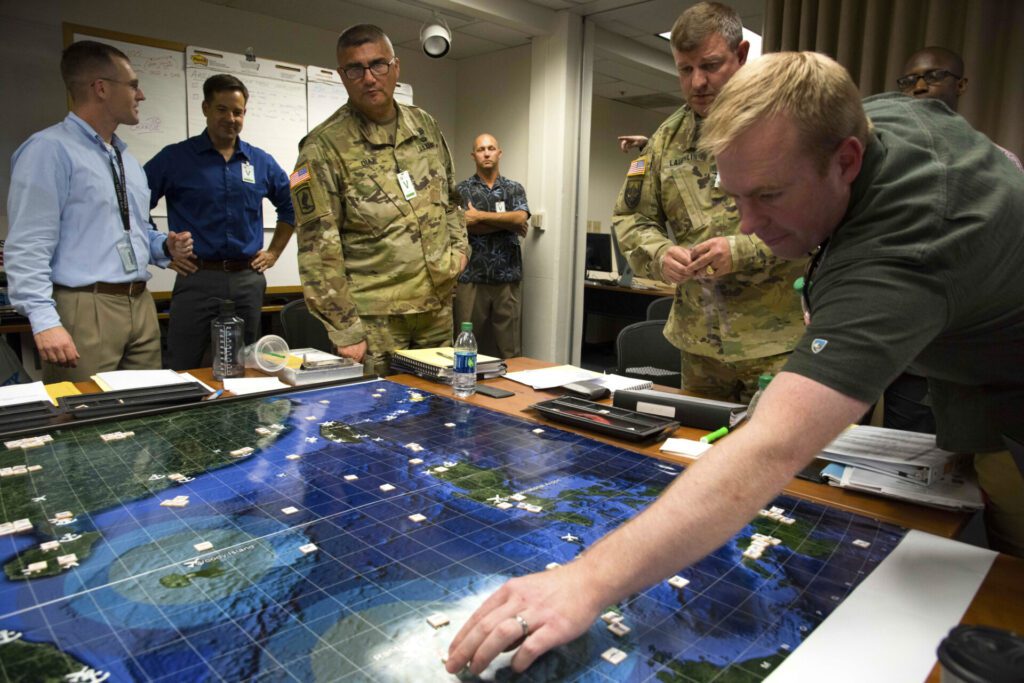In conclusion, the art of war and military simulation and wargaming go hand in hand. With a rich history dating back to ancient times, these activities have played a crucial role in training and preparing military leaders for real-world conflicts. The benefits of military simulation and wargaming are numerous, including the ability to experiment with different strategies and identify weaknesses in a controlled environment. However, there are also challenges, such as the need for realistic simulations and the cost of maintaining these programs. Looking ahead, the future of military simulation and wargaming looks promising, with advancements in technology likely to create even more immersive and effective simulations.
The Art of War: Exploring Military Simulation and Wargaming
Introduction
The Art of War, written by the ancient Chinese military strategist Sun Tzu, is one of the most influential works on military strategy and tactics. Its timeless wisdom has been studied and applied in various fields, including business, politics, and, of course, military affairs. One of the most effective ways to explore the principles of The Art of War is through military simulations and wargaming, which have been used for centuries to train and prepare military leaders for real-world conflicts.
History of Military Simulation and Wargaming
The roots of military simulation and wargaming can be traced back to ancient times, when military leaders used various forms of games and exercises to train their troops and test their strategies. One of the earliest examples of wargaming can be found in the ancient Indian text, the Mahabharata, which describes a game called Chaturanga that simulated a battle between two armies.
In the modern era, military simulations and wargaming have become an integral part of military training and strategic planning. During the 19th century, the Prussian military developed a series of wargames known as Kriegsspiel, which were used to train officers in the art of strategy and tactics. These games were highly influential and were adopted by other militaries around the world.
The Role of Technology in Military Simulation
In recent years, technology has revolutionized the field of military simulation and wargaming. Advanced computer software and hardware have allowed military planners to create highly realistic and immersive simulations of military operations. These simulations can replicate a wide range of scenarios, from small-scale skirmishes to large-scale battles, and can be used to train soldiers, test new equipment, and develop strategic plans.
HTML headings for military simulation and wargaming
– The Importance of Military Simulation and Wargaming
– The Benefits of Military Simulation and Wargaming
– The Challenges of Military Simulation and Wargaming
– The Future of Military Simulation and Wargaming
– Conclusion
The Importance of Military Simulation and Wargaming
Military simulation and wargaming play a crucial role in preparing military leaders for the complexities of modern warfare. By simulating realistic scenarios, military planners can test different strategies and tactics, identify potential vulnerabilities, and develop effective solutions. This allows them to make more informed decisions and better prepare their forces for the challenges they may face in real-world conflicts.
The Benefits of Military Simulation and Wargaming
There are numerous benefits to using military simulation and wargaming as a training and planning tool. One of the key advantages is that it allows military leaders to experiment with different courses of action without risking the lives of their troops. This can lead to more innovative and effective strategies, as well as a deeper understanding of the capabilities and limitations of their forces.
Additionally, military simulation and wargaming can help to identify and address weaknesses in military plans and equipment. By exposing potential problems in a controlled environment, military planners can take proactive measures to mitigate risk and improve their overall readiness.
The Challenges of Military Simulation and Wargaming
While military simulation and wargaming offer many benefits, there are also challenges associated with these activities. One of the primary challenges is the need for highly realistic and accurate simulations, which can be difficult to achieve. Creating a truly lifelike simulation requires advanced technology and a deep understanding of military tactics and operations.
Another challenge is the cost and resources required to develop and maintain military simulations and wargaming programs. These activities can be time-consuming and expensive, and may require significant investment in personnel, equipment, and software.
The Future of Military Simulation and Wargaming
As technology continues to advance, the future of military simulation and wargaming looks promising. The development of virtual reality, artificial intelligence, and other cutting-edge technologies has the potential to revolutionize the field and create even more immersive and realistic simulations.
Additionally, the growing importance of cyber warfare and other non-traditional threats means that military planners will need to adapt their simulations to address these new challenges. This will require a continued focus on innovation and a willingness to embrace new technologies and methodologies.
Conclusion
Military simulation and wargaming have long been essential tools for training and preparing military leaders. By allowing them to test different strategies and tactics in a controlled environment, these activities help to improve readiness and effectiveness on the battlefield. As technology continues to evolve, the future of military simulation and wargaming looks bright, with the potential to create even more advanced and realistic simulations.
